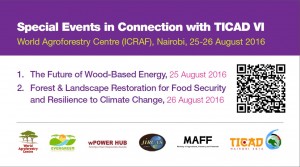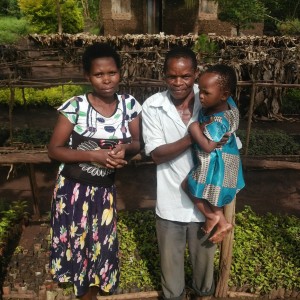 Would you quit your current position at your place of work to venture out on your own? If so, would you consider yourself to have acquired all the skills and expertise necessary to be successful? According to Samuel, a champion farmer of the Trees for Food Security (T4FS) Project, it was about time he developed his own tree nursery. Having worked as a casual for the Elgon Trust Women Group under T4FS, Samuel used to pot seedlings, maintain the tree nursery as well as collect tree seeds. The returns were however not as good compared to the benefits enjoyed by his employers.
Would you quit your current position at your place of work to venture out on your own? If so, would you consider yourself to have acquired all the skills and expertise necessary to be successful? According to Samuel, a champion farmer of the Trees for Food Security (T4FS) Project, it was about time he developed his own tree nursery. Having worked as a casual for the Elgon Trust Women Group under T4FS, Samuel used to pot seedlings, maintain the tree nursery as well as collect tree seeds. The returns were however not as good compared to the benefits enjoyed by his employers.
Samuel therefore resolved to quit his job and start his own nursery, banking on the knowledge and skills he acquired over the years. One main hurdle however, potting tubes, stood in his way as they are quite expensive. This however did not deter him from making the bold move. Instead, Samuel would set out on specific days, go around restaurants and bars in the area, to collect milk and beer sachets, which he would use as potting materials. With this innovation and the support of his wife, Samuel was off to a good start on his own.
Acquiring tree seeds was not a big challenge as Samuel had already spotted mature trees in the area. Through past experiences working for the group, Samuel was able to monitor seed maturity period and this would help him plan as to when and how he would collect the seeds. He would therefore move around the community, climb the trees and harvest the seeds.
In order to improve and increase the survival rates of his Eucalyptus seedlings, Samuel introduced a technique where he would place dry banana leaves over a nursery soil mixture and burn to provide a covering for the nursery beds. This innovation greatly improves the germination and performance of his seedlings. The Trees for Food Security Project has also built my capacity in tree seed collection and maintaining nursery records.
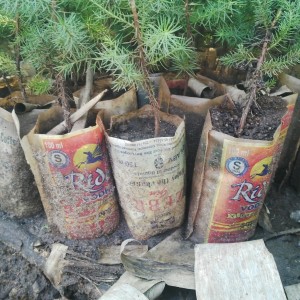 In a year, Samuel highlighted that he makes between UGX 500,000 (USD 152) and UGX 1 million (USD 303), depending on the season and orders he receives from projects and local organizations. Pests have however been a challenge as this affects the number of seedlings ready for sale.
In a year, Samuel highlighted that he makes between UGX 500,000 (USD 152) and UGX 1 million (USD 303), depending on the season and orders he receives from projects and local organizations. Pests have however been a challenge as this affects the number of seedlings ready for sale.
Noting his efforts and interests, the Trees for Food Security Project came in to support Samuel by providing the polythene tubes. “I have four children whom I enrolled in a private school which is way more expensive than public schools and I haven’t lacked fees to support them. I also use the proceeds from to purchase household items and sustain my family’s needs. I owe my success to knowledge and skills got from the Elgon Trust Women Group and additional skills and support from the Trees for Food Security Project,” stated Samuel.
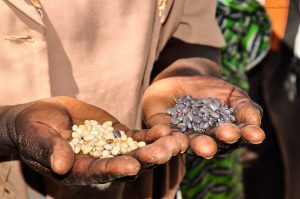 Less than a year after supplying farmers with legume seeds and fertilizer tree seedlings, the Legume CHOICE project team caught up with farmers and traders in Kisii and Migori counties of Kenya. The farmers were already enjoying the benefits and were keen to scale up.
Less than a year after supplying farmers with legume seeds and fertilizer tree seedlings, the Legume CHOICE project team caught up with farmers and traders in Kisii and Migori counties of Kenya. The farmers were already enjoying the benefits and were keen to scale up.

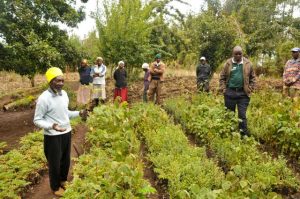 Kenya
Kenya  Kenya faces several disparate
Kenya faces several disparate  A 7,700 kilometer wall of trees, running through 11 countries along the southern frontier of the Sahara Desert. That’s what the African Union proposed in 2007, a “Great Green Wall” that was to be the largest living structure on the planet.
A 7,700 kilometer wall of trees, running through 11 countries along the southern frontier of the Sahara Desert. That’s what the African Union proposed in 2007, a “Great Green Wall” that was to be the largest living structure on the planet.